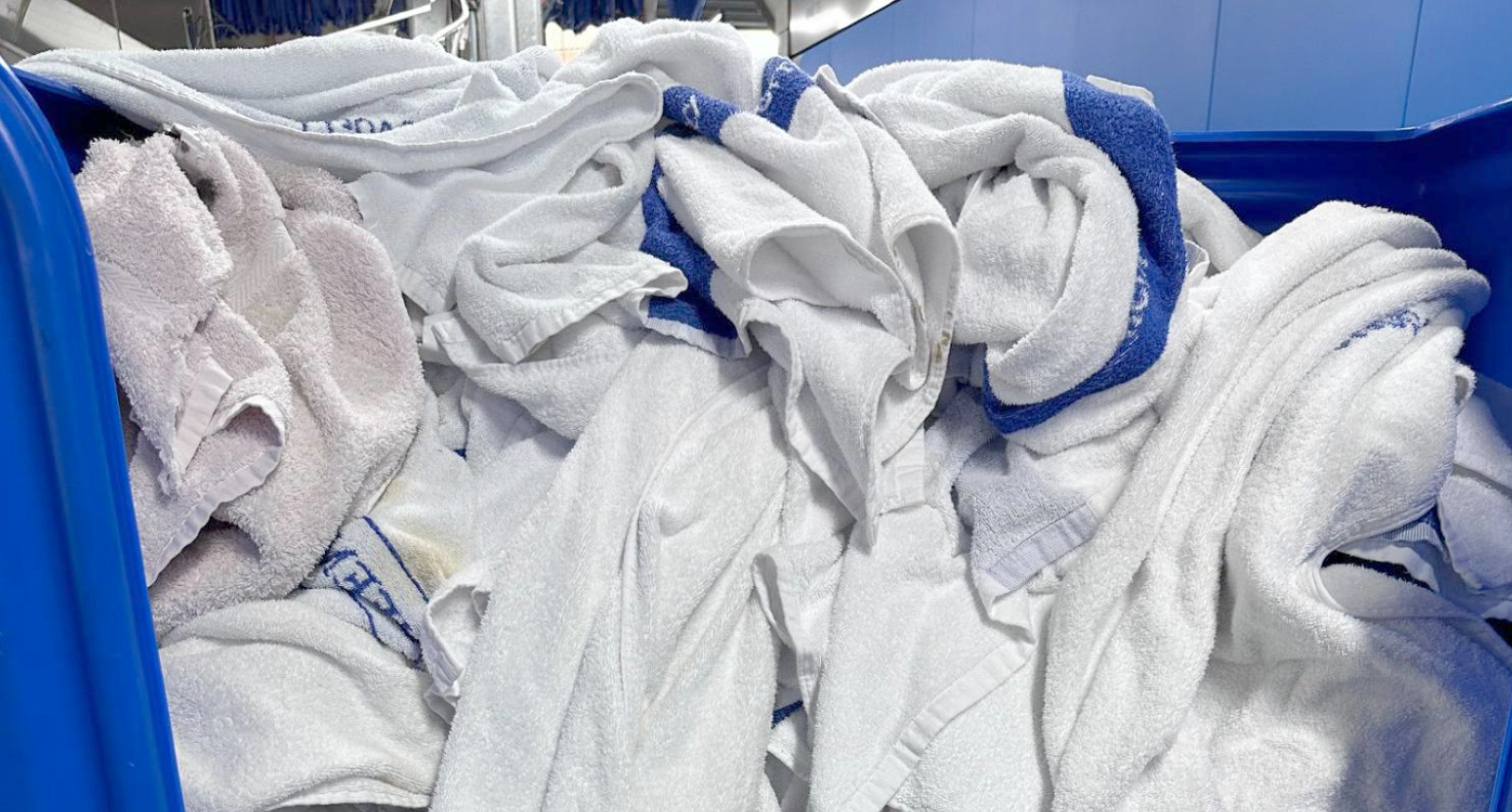In the busy world of commercial laundries, effectively managing rewash is essential for operational efficiency, cost-effectiveness and environmental sustainability. Below we look at how and why managing rewash is so important to your operation.

Understanding rewash
What is rewash? Rewash occurs when items do not meet the desired cleanliness standard after the first wash and require reprocessing.
Should I expect rewash? Yes, a small amount of rewash should be expected. When you are washing on mass, you balance your time, temperature and chemical concentration for the bulk of the garments being processed. Items at the extremes of staining or soil load may not be stain free or clean after the first wash. If your linen is 100% clean, 100% of the item then you risk overwashing which results in significantly increased chemical and linen replacement costs.
What can cause rewash? If we recall the article by JayChem’s National Technical Manager, Brad Carruthers, the Circle of Sinner notes that a balance of Time, Temperature and Mechanical Action is critical for optimal results. At JayChem, we would add Procedures to this list given their critical link in driving consistent outcomes. A reduction or complete breakdown in one or more of these factors will have an adverse wash outcome i.e. higher rewash.
What can the impacts of rewash be? The consequences of high rewash rates can be significant. They include increased water/energy consumption, additional labour costs, increased machine ware and tear, greater environmental impact and potential damage to textiles. Finding the balance between clean, crisp hygienic linen at an acceptable rewash rate is highly important.
The importance of managing rewash
- Operational efficiency: High rewash rates lead to a decrease in operational efficiency as resources are assigned to reprocessing items that should have been cleaned effectively during the first wash. This both lessens the overall productivity of the laundry and increases the workload on staff.
- Cost-effectiveness: Controlling rewash is essential in maintaining a cost-effective commercial laundry operation. Additional expenses associated with reprocessing – such as extra chemistry, water and energy consumption – can have a significant impact on the bottom line. Continuous overwashing will also contribute to accelerated tensile strength loss, reducing linen life. Consistently meeting the correct rewash target for your specific industry is critical to maintaining a cost-effective laundry operation.
- Customer satisfaction: Consistently delivering clean, well maintained and sanitary linens is especially important in the hospitality and healthcare sectors. Controlling rewash is a major contributor to ensuring a laundry’s customers receive quality products, leading to enhanced customer satisfaction and loyalty.
- Environmental impact: Excessive rewash contributes to increased water and energy consumption, negatively impacting the environmental footprint of a commercial laundry. Implementing measures to control rewash can align with sustainability goals and reduce the overall impact a laundry operation has on the environment.
Strategies for managing rewash
- Staff training: Properly trained staff are essential for ensuring that laundry processes are well executed the first time. Training should focus on best practices, including proper wash classification sorting, use of the correct wash process, load management and equipment maintenance.
- Investment in technology: Upgrading laundry equipment with advanced technologies can greatly assist in managing rewash rates. Modern dosing equipment, utilising technology such as sensors for precise chemistry dispensing, is designed to optimise cleaning processes – minimising the need for reprocessing. Newer, more energy-efficient machines are important for optimum wash performance.
- Quality control measures: Implementing rigorous quality control measures through all stages of the laundry process (Time, Temperature, Mechanical Action, Chemical Action and Procedures) helps to identify and resolve issues before items move to the next stage. Regular checks can catch problems early, reducing the likelihood of an item needing rewash.
- Data analytics: Utilising data analytics to monitor and assess rewash rates enables laundry managers to identify patterns and find root causes. This data-driven approach allows for focused intervention and continuous improvement in laundry processes. Some of the most advanced dispensers available today, like JayCloud, offer seamless integration with your facility to ensure previously unactioned ‘data’ becomes actionable information helping you make informed business decisions.
Managing rewash effectively in the commercial laundry industry is essential to maintaining operational efficiency, reducing costs, increasing environmental sustainability and driving your competitive advantage. By implementing strategies that focus on staff training, investment in technology, quality control and data analytics, laundries can boost their overall performance in this space and deliver high quality outcomes to their customers.
